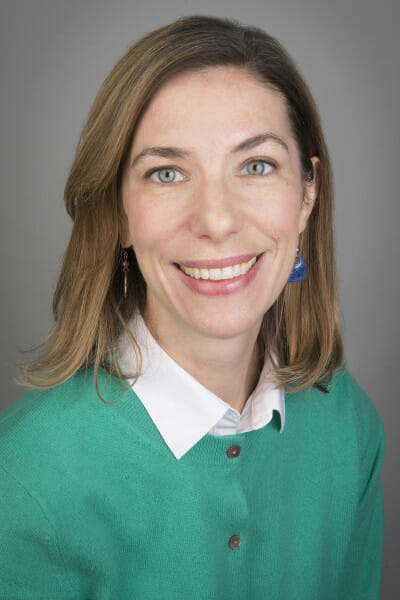
Associate Professor, Biology
The rise in antibiotic resistance is a grave threat to human health, with dire predictions of the onset of a “post-antibiotic age” in which our antibiotics will no longer be effective in treating infectious disease. My research focuses on identifying novel antimicrobial molecules by utilizing a mixture of classical microbiology approaches, pharmaceutical library screens and structural biochemistry. This work places students at the interface of multiple disciplines, including microbiology, cell biology, biochemistry, medicinal chemistry, organic chemistry and computer science, enabling them to contribute to drug discovery by employing an interdisciplinary approach.
Recently, in collaboration with the Structural Genomics Consortium at the University of North Carolina, my research students completed a screen of the GlaxoSmithKline kinase inhibitor library. This work identified several inhibitors of the respiratory fungal pathogen Histoplasma capsulatum. This work is an example of “drug repurposing,” in which the depth and breadth of existing pharmaceutical libraries can be mined to identify pre-existing molecules with novel activities.
I also collaborate with the Antimicrobial Discovery Center at Northeastern University to identify and characterize organisms producing antifungal compounds. https://web.northeastern.edu/adc/
Butela K.A. et al. (2017) “Complete Genome Sequences of Cluster A Mycobacteriophages BobSwaget, Fred313, KADY, Lokk, MyraDee, Stagni, and StepMih” Genome Announc. 5(43). pii: e01182-17.
Berkes, C. A., Chan, L. L. (2015) “Investigation of Macrophage Differentiation and Cytokine Production in an Undergraduate Immunology Laboratory Using Image Cytometry.” Bioscene: Journal of College Biology Teaching 41(2); 3-10.
Isaac, D. T., Berkes, C. A., Hocking-Murray, D., Coady, A., English, B., Lee, Y. N., and Sil, A. (2015) “Macrophage Cell Death and Transcriptional Response Are Actively Triggered by the Fungal Virulence Factor Cbp1 During H. capsulatum Infection.” Molecular Microbiology.
Pope, W. H., Bowman, C. A., et al. (2015) “Whole Genome Comparison of a Large Collection of Mycobacteriophages Reveals a Continuum of Phage Genetic Diversity.” eLIFE 4:e06416.
Daniels, D., Berkes, C. , Nekoie, A., and Franco, J. (2015) “Fighting Tuberculosis in an Undergraduate Laboratory: Synthesizing, Analyzing and Evaluating Inhibitors.” J Chem Ed. 92(5):928-931.
Franco J., Blackie, M., Toth, D., Smith, P., Capuano, J., Fastnacht, K., Berkes, C. (2013) “A Structural Comparative Approach to Identifying Novel Antimalarial Inhibitors.” Comput Biol Chem. 45:42-7.
Berkes, C. A., Chan, L. L., Wilkinson, A. and Paradis, B. (2013) “Use of Image Cytometry for Quantification of Pathogenic Fungi in Association With Host Cells.” J Vis Exp. Jun 19;(76).
Berkes, C. A., Chan, L. L., Wilkinson, A. and Paradis, B. (2012) “Rapid Quantification of Pathogenic Fungi by Cellometer Image-Based Cytometry.” J Microbiol Methods 91(3):468-76.
Chan, L. L., Kury, A., Wilkinson, A., Berkes, C. A. and Pirani, A. (2012) “Novel Image Cytometric Method for Detection of Physiological Changes in Saccharomyces cerevisiae.” J Ind Microbiol Biotechnol 39(11):1615-23.
Inglis, D. O., Berkes, C. A., Hocking Murray, D. R. and Sil, A. (2010) “Conidia but Not Yeast of the Fungal Pathogen Histoplasma capsulatum Trigger a Type I Interferon Innate Immune Response in Murine Macrophages.” Infect Immun. 78(9):3871-3882.
The Student Government Association’s Academic Affairs Committee (SGA) worked with faculty and the Office of the Provost to include American Sign Language (ASL) as part of the College’s foreign language requirement starting in spring 2024.
